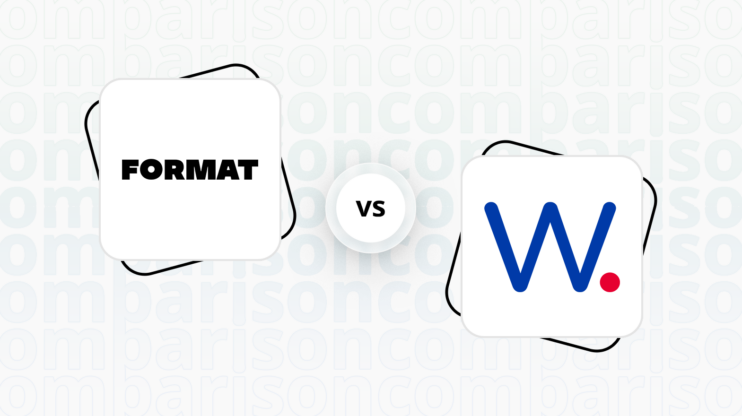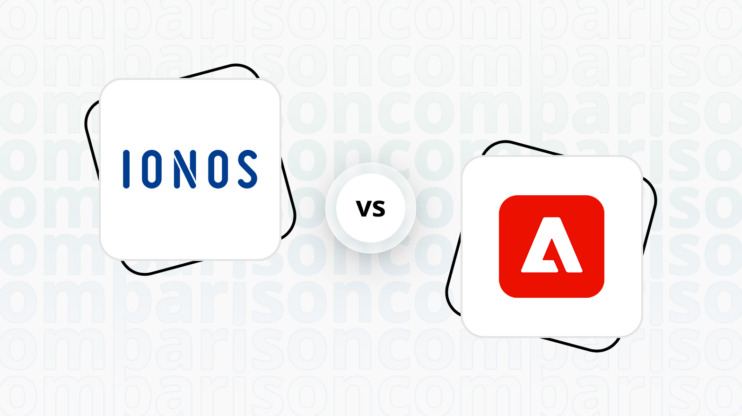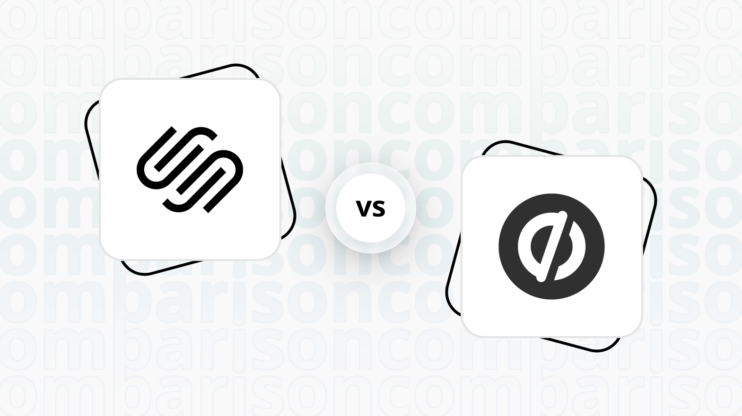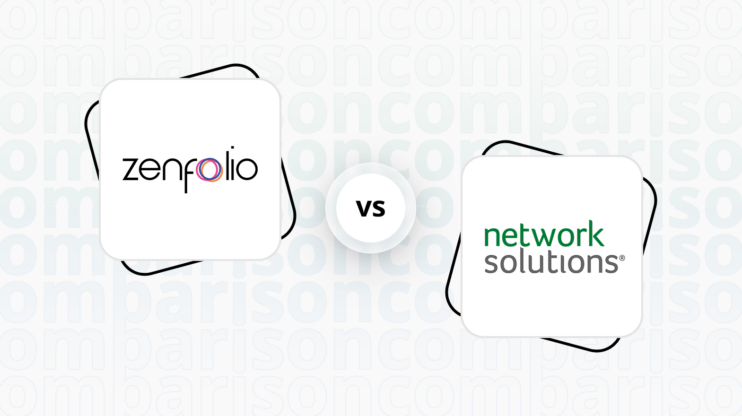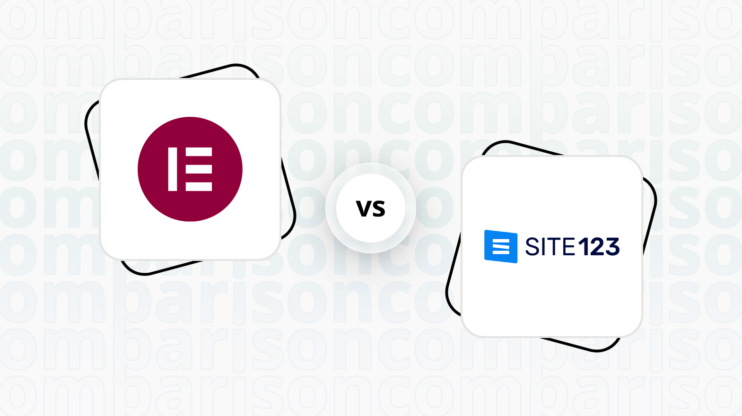Final verdict
Adobe Commerce(ex Magento) and Unbounce both offer unique strengths tailored to different business needs.
-
Adobe Commerce(ex Magento) (Overall Grade: 6.9/10)
is a versatile and scalable ecommerce platform ideal for both B2B and B2C businesses. It excels in providing comprehensive ecommerce features, advanced customization options, and robust security measures. Adobe Commerce is particularly suited for larger businesses with complex needs, offering extensive plugins and integrations, detailed analytics, and strong customer support. However, its complexity can pose challenges for beginners without technical expertise. -
Unbounce (Overall Grade: 6.4/10)
is a powerful tool for creating high-converting landing pages, popups, and sticky bars. It stands out for its user-friendly drag-and-drop interface, a wide range of templates, and strong focus on optimizing conversion rates. Unbounce is ideal for marketers and small businesses looking to quickly create and test landing pages without needing coding skills. While it integrates well with various marketing tools, it lacks the comprehensive ecommerce capabilities and advanced customization options of Adobe Commerce.

|

|
|
|---|---|---|
|
Design functionalities & templates |
6.7 |
7.8 |
|
Ease of use |
5.4 |
8.2 |
|
Ecommerce |
9.4 |
4.8 |
|
Website Editors |
7.8 |
7.5 |
|
Product testing options |
3.9 |
6.6 |
|
Price |
5.8 |
7.0 |
|
Hosting quality |
8.1 |
3.9 |
|
Website speed optimization |
6.6 |
5.6 |
|
Plugins and integrations |
9.1 |
6.8 |
|
Marketing features |
8.1 |
7.4 |
|
Customer support |
8.3 |
7.7 |
|
Security |
8.4 |
8.4 |
|
AI capabilities |
7.7 |
7.5 |
|
User Management |
8.0 |
7.2 |
Best for ecommerce
 9.4
9.4
 4.8
4.8
Verdict
: Adobe Commerce(ex Magento) is the clear winner for ecommerce due to its comprehensive features and scalability, while Unbounce is more suited for creating high-converting landing pages with limited ecommerce integration.
-
Adobe Commerce(ex Magento)
: With a score of 9.4, Adobe Commerce(ex Magento) excels in providing a versatile and scalable ecommerce platform. It offers extensive features such as product and inventory management, order processing, customer account management, and robust security measures. Its integration with Adobe Experience Cloud enhances customer insights, making it ideal for both B2B and B2C businesses looking for a comprehensive ecommerce solution. -
Unbounce
: Scoring 4.8, Unbounce is primarily a landing page builder focused on optimizing conversion rates. While it integrates with ecommerce platforms like Shopify or Ecwid, it lacks the depth and breadth of ecommerce features found in Adobe Commerce(ex Magento). Unbounce is best suited for marketers looking to create high-converting landing pages and popups, rather than managing a full-fledged online store.
Best for informational & business websites
 7.4
7.4
 5.9
5.9
Verdict
: Adobe Commerce(ex Magento) is better suited for complex, scalable informational websites with advanced customization needs, while Unbounce excels in creating high-converting landing pages with ease.
-
Adobe Commerce(ex Magento)
: Adobe Commerce(ex Magento) offers a robust platform for informational websites, especially for businesses that require extensive customization and scalability. Its integration with Adobe Experience Cloud and a wide range of developer tools make it ideal for creating a highly personalized and data-driven online presence. However, its complexity may pose challenges for beginners without technical expertise.
Score: 7.4
-
Unbounce
: Unbounce is designed for creating high-converting landing pages, popups, and sticky bars, making it an excellent choice for businesses focused on marketing and lead generation. Its user-friendly drag-and-drop builder and a wide selection of templates make it easy to create and customize pages without coding skills. However, it may lack the depth and flexibility needed for more complex informational websites.
Score: 5.9
Detailed comparison
Design functionalities & templates
Design FunctionalitiesRepresents how well each platform allows for creative design and customization of websites.Score Components:
- Template Variety (30%): Range and quality of design templates.
- Customization (30%): Flexibility and options for design alterations.
- User Interface (20%): Ease and intuitiveness of the design process.
- Responsiveness (10%): Adaptability to different devices and screen sizes.
- Innovation (10%): Unique design features and tools.
 6.7
6.7
 7.8
7.8
🏆
Winner: Unbounce.
Unbounce offers a more user-friendly interface with a wide range of templates and a drag-and-drop builder, making it easier to create and customize landing pages.
Adobe Commerce (ex Magento) prioritizes flexibility over pre-built templates. While it offers a limited selection of base themes, users can access third-party themes for customization. Theme options are highly adaptable, allowing changes to layouts, colors, fonts, and the creation of custom page layouts.
Adobe Commerceex Magento Themes
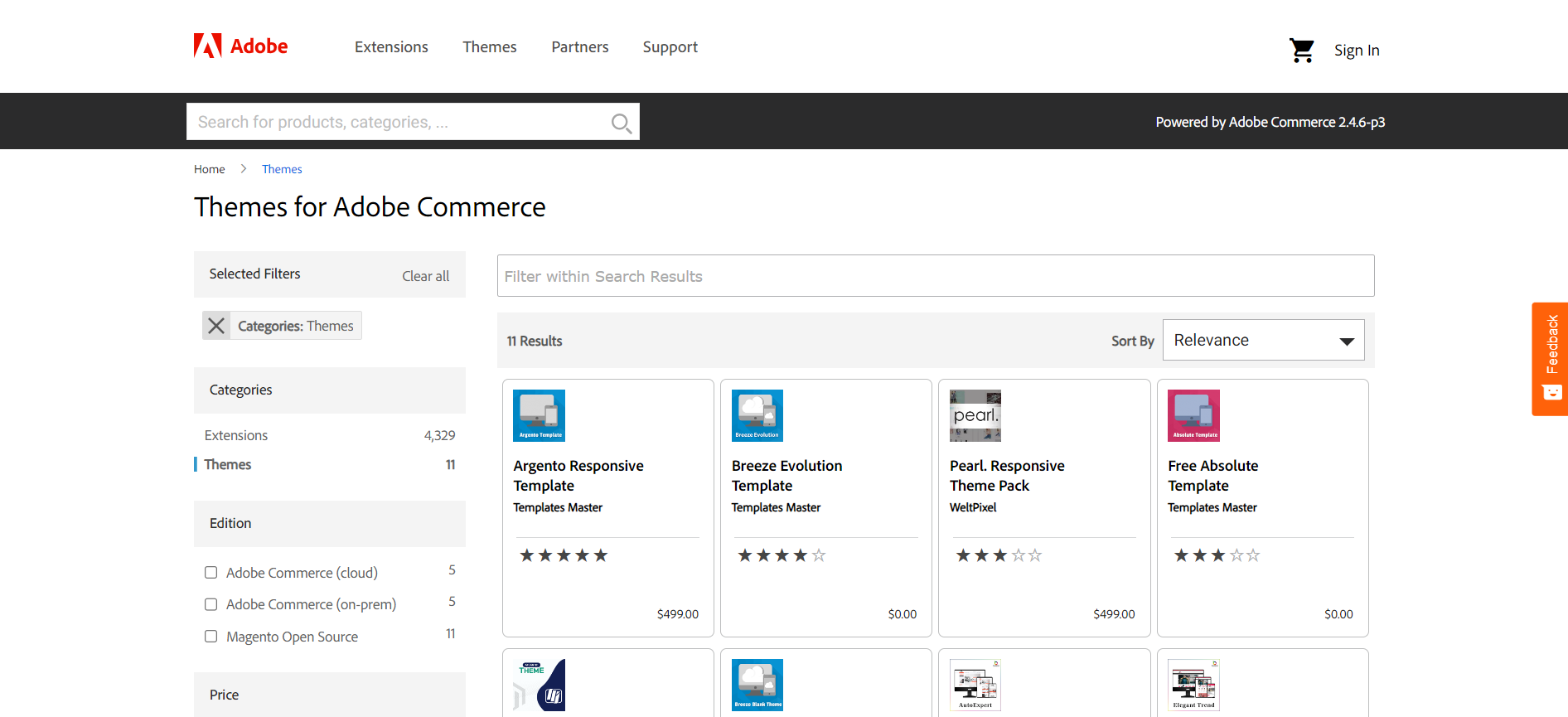
On the other hand, Unbounce provides a gallery of over 100 high-converting templates for landing pages, popups, and sticky bars. These templates are designed with conversion in mind, incorporating knowledge and insights gained from Unbounce’s experience in optimizing landing pages.
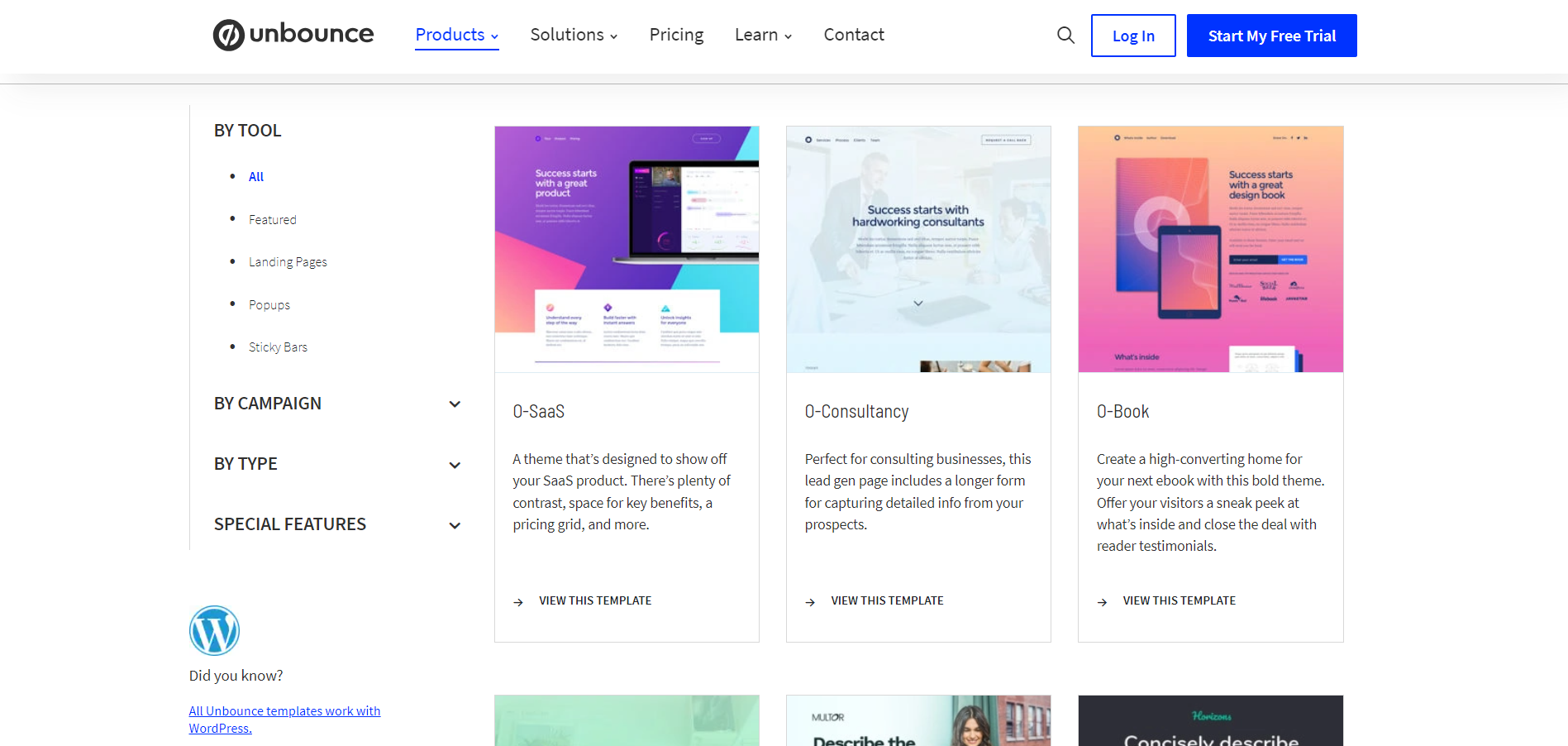
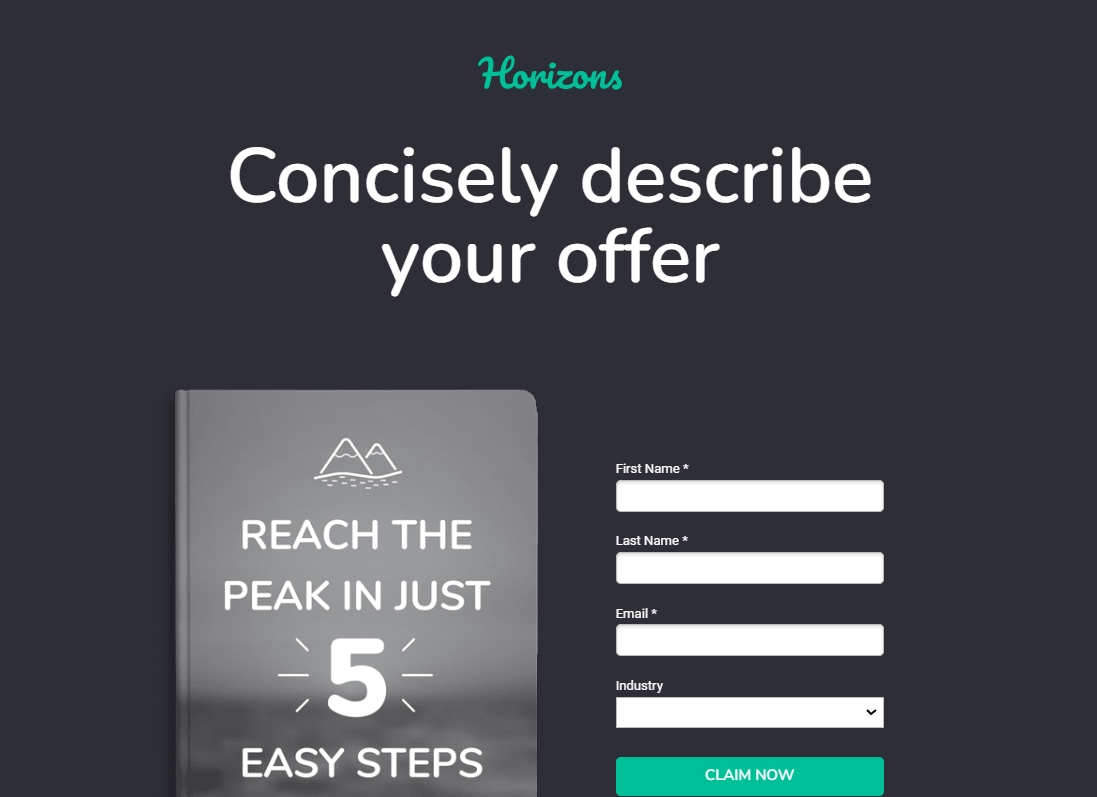
Get a head start on website creation with AI
Create a custom website tailored to your business needs 10X faster with 10Web AI Website Builder!
Ease of use
Ease of useReflects the platform’s overall user-friendliness.Score
Components:
- Learning curve (40%): Quickness and ease of getting started.
- Interface design (30%): Simplicity and intuitiveness of layout.
- User guidance (20%): Quality of tutorials and support.
- Flexibility (10%): Adaptability to various user skills.
 5.4
5.4
 8.2
8.2
🏆 Winner: Unbounce
. With a score of 8.2, Unbounce is recognized for its intuitive drag-and-drop builder and a wide selection of templates, making it easy for users to design and customize landing pages. Adobe Commerce(ex Magento), scoring 5.4, offers high customization capabilities and scalability but its complexity can pose challenges for beginners without technical expertise.
Learning Resources
🏆 Winner: Adobe Commerce(ex Magento)
. Adobe Commerce offers a comprehensive array of learning resources, including videos, tutorials, and instructor-led courses through Adobe Digital Learning Services, covering everything from basic store management to advanced catalog and product management. Unbounce also offers a rich collection of learning resources but Adobe Commerce’s resources are more comprehensive.
For ecommerce
EcommerceMeasures the platform’s effectiveness in supporting online business activities.Score Components:
- Ecommerce themes and templates (20%): Variety and design of templates.
- Product management (25%): Ease of managing and organizing products.
- Payment options (25%): Variety and convenience of payment methods.
- Ecommerce features (20%): Features for managing an ecommerce store.
- Integration (10%): Compatibility with external e-commerce tools and services.
 9.4
9.4
 4.8
4.8
Adobe Commerce (formerly Magento) is a robust ecommerce platform suitable for both B2B and B2C businesses. It offers a comprehensive set of features for managing online stores, including product and inventory management, order processing, customer account management, targeted marketing capabilities, diverse payment processing options, and robust security measures. On the other hand, Unbounce is primarily a landing page builder that can integrate with ecommerce platforms like Shopify or Ecwid.

|

|
|
|---|---|---|
|
Ecommerce themes and templates |
7.5 |
2.0 |
|
Product page customization |
9.0 |
3.0 |
|
Payment processing and commissions |
7.8 |
6.5 |
|
POS capabilities |
7.0 |
0.0 |
|
Payment gateways |
8.5 |
7.0 |
|
Product numbers |
7.5 |
0.0 |
|
Additional ecommerce features |
8.0 |
4.5 |
Adobe Commerce ecommerce features:
- Product and Inventory Management
- Order Management
- Customer Management
- Marketing and Promotions
- Payment Processing
- Multi-Channel Commerce
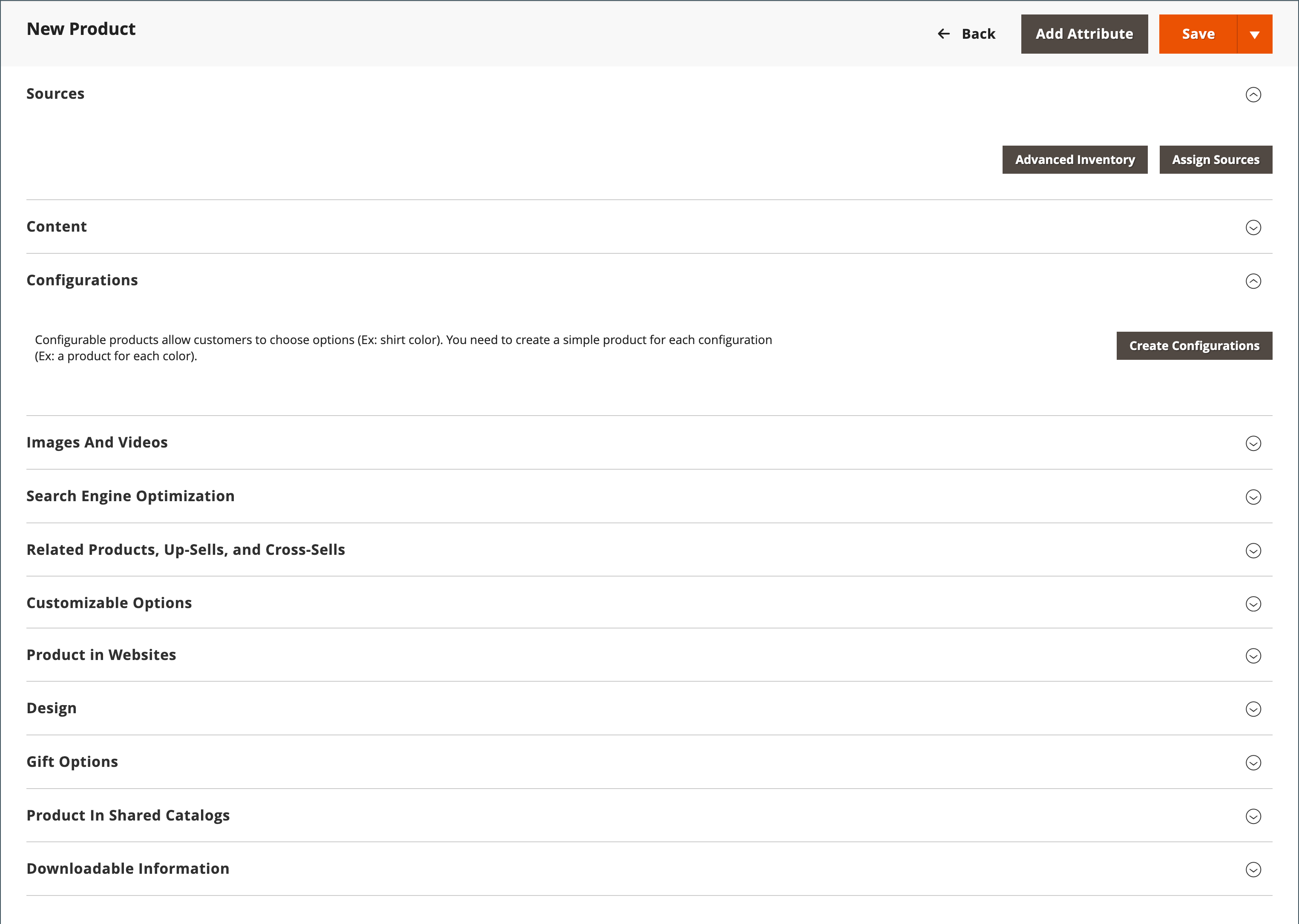
Unbounce ecommerce features:
- Shopify, Ecwid, or and other ecommerce solutions integration
Ecommerce themes & templates
Adobe Commerce offers a comprehensive ecosystem for ecommerce themes and templates, enabling businesses to customize their online stores to meet specific branding and functionality requirements. Themes in Adobe Commerce serve as the visual and structural framework for online stores, incorporating layout files, template files, translation files, and skins to define the look and feel. Unbounce, however, primarily focuses on building landing pages and does not have ecommerce specific templates.
Product page customization
Adobe Commerce offers extensive customization options for product pages, enabling businesses to enhance the user experience and tailor product displays to their specific needs. This includes customizing layouts, product attributes, images and media, dynamic content like related products and reviews, and custom product options such as configurable and bundled products. Unbounce, on the other hand, does not have the possibility to create or customize product pages, it’s primarily focused on building landing pages, with the possibility to integrate with ecommerce platforms such as Shopify or Ecwid.
Payment processing
Adobe Commerce offers integrated payment solutions and commission management for seamless online transactions, alongside POS integration for omnichannel retail experiences. It supports a wide array of payment gateways, ensuring flexible and secure payment options for customers. Unbounce supports payment processing through an integration with Stripe, allowing users to create landing pages that can handle transactions directly, with Stripe facilitating global payments in over 135 currencies. Unbounce itself does not mention charging additional fees for transactions, implying that fees are subject to Stripe’s own pricing structure. The platform is focused on optimizing online conversions and does not offer Point of Sale (POS) capabilities, as its core features are designed for enhancing digital experiences such as landing pages and pop-ups.
Website Editors
Website EditorsEvaluates the platforms’ website building and editing capabilities.Score Components:
- Customization tools (40%): Range and power of editing features.
- Editor usability (30%): User experience within the editor.
- Design flexibility (20%): Freedom in layout and design changes.
- Update and maintenance ease (10%): Simplicity of updating and maintaining the site.
 7.8
7.8
 7.5
7.5
🏆
Winner: Adobe Commerce(ex Magento)
. Adobe Commerce(ex Magento), with a score of 7.8, offers a user-friendly website editor with its Page Builder tool, designed for ease of use through drag-and-drop capabilities, allowing for simple management and customization of eCommerce sites without extensive developer involvement. It provides a flexible and intuitive platform for users to effortlessly design, update, and maintain their online stores, supported by a variety of design options and themes for tailored branding and promotional activities.
Unbounce’s website builder’s editor, scoring 7.5, is equipped with a user-friendly drag-and-drop interface, enabling users to design and customize landing pages without the need for coding skills. It offers a variety of templates, widgets, and elements such as forms and buttons, alongside options for integrating custom HTML, CSS, and JavaScript for advanced customization. The platform supports responsive design, ensuring landing pages perform well across all devices, and includes features for A/B testing and dynamic text replacement to optimize conversion rates.
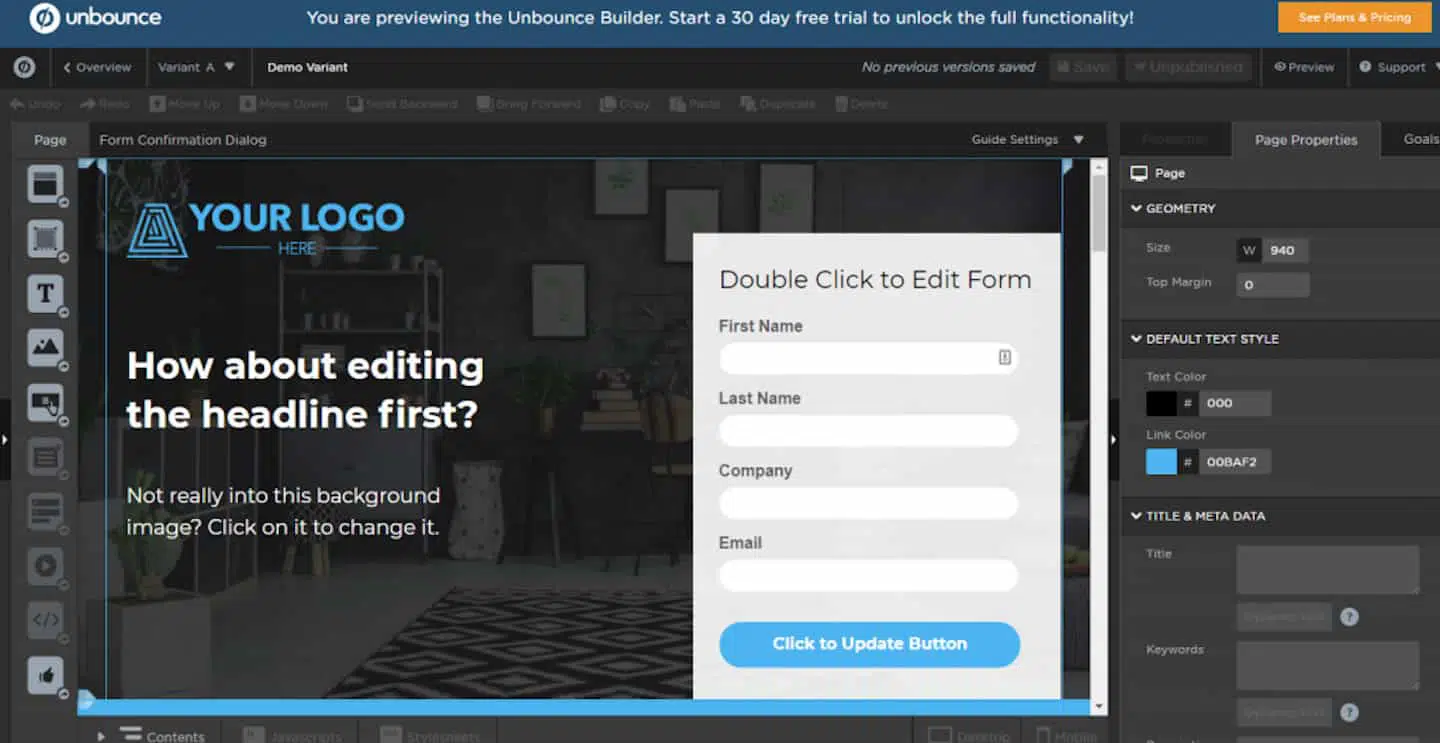
Mobile editor/app
 0
0
 0
0
🏆
No clear winner
. Both Adobe Commerce (ex Magento) and Unbounce do not offer a dedicated mobile app for website editing. This means that users cannot make changes to their websites directly from their mobile devices, which could be a disadvantage for those who prefer to work on-the-go. However, both platforms offer robust features and functionalities on their desktop versions, catering to a wide range of user needs and preferences.
Adobe Commerce, previously known as Magento, is a powerful ecommerce platform that offers a wide range of features for online store management. It provides comprehensive tools for product management, order processing, inventory tracking, and sales reporting. However, it does not offer a mobile app for website editing, which could be a disadvantage for users who prefer to work on-the-go.
Unbounce, on the other hand, is a landing page builder that excels in creating high-converting landing pages. It offers a user-friendly, drag-and-drop interface, allowing users to create and edit landing pages with ease. However, like Adobe Commerce, it does not offer a mobile app for website editing.
In summary, both Adobe Commerce and Unbounce offer robust features and functionalities on their desktop versions, but they do not offer a mobile app for website editing. This could be a disadvantage for users who prefer to work on-the-go.
Product testing options
Product Testing OptionsAssesses the options for trying out platform features before commitment.Score Components:
- Trial quality (40%): Extent and usefulness of the trial or free version.
- Feature accessibility (30%): How many features are available to test.
- Trial duration (20%): Length of the trial period.
- Ease of transition (10%): Smoothness of moving from trial to paid plans.
 3.9
3.9
 6.6
6.6
Overall Result
:
Unbounce Wins
. Unbounce scores 6.6, offering a 14-day free trial and the possibility to test premium features during this period. Adobe Commerce(ex Magento), scoring 3.9, does not offer a free or trial version, but allows testing of premium features through a demo version upon request.

|

|
|
|---|---|---|
|
Free Plan |
No | No |
|
Trial Duration |
No |
14 days |
|
Testing Premium Features |
By requesting a demo version |
During the 14-day free trial |
|
Money Back Guarantee |
No | No |
Price
PriceLooks at the cost-effectiveness and value for money of each platform.Score Components:
- Plan value (40%): What each pricing tier offers.
- Transparency and clarity (30%): Clearness of pricing structures.
- Flexibility of plans (20%): Range of options to suit different budgets.
- Hidden costs (10%): Additional expenses not included in the plan.
 5.8
5.8
 7.0
7.0
Unbounce offers a more straightforward and affordable pricing structure, while Adobe Commerce (ex Magento) is more suited for larger businesses with more complex needs and higher budgets.

|

|
|
|---|---|---|
|
$90-$100 |
No offering at this amount. |
Build ($99.00/month): Provides tools for building and launching high-converting landing pages, unlimited pages, popups, sticky bars, a form builder, free hosting, AI copywriting, custom scripts, 1,000+ integrations, support for 1 root domain with unlimited subdomains, catering up to 20,000 monthly unique visitors. Value for price: 6.5 |
|
$100-$200 |
No offering at this amount. |
Experiment ($149.00/month): Includes everything in the Build plan plus unlimited A/B tests, advanced reporting, dynamic text replacement, support for 2 root domains, and up to 30,000 monthly unique visitors. Value for price: 7.5 |
|
$200-$300 |
No offering at this amount. |
Optimize ($249.00/month): Adds to the Experiment plan with AI traffic optimization, visitor behavior insights, advanced targeting, supports 3 root domains, and caters to up to 50,000 monthly unique visitors. Value for price: 8.0 |
|
$600-$700 |
No offering at this amount. |
Concierge (Starting at $649/month): Offers everything in the Optimize plan plus dedicated support, implementation services, client and user management, flexible add-on plans for scaling, starting with 5 root domains and 100,000 monthly unique visitors, with options to scale. |
|
$2000+ |
Adobe Commerce Pro and Managed Services ($2000/month): Adobe Commerce Pro and Managed Services are designed to deliver scalable, secure, and extensive eCommerce solutions tailored to a wide range of business demands. It offers a comprehensive set of ecommerce tools, including product and inventory management, efficient order processing, customer account management, targeted marketing capabilities, diverse payment processing options, robust security measures, and scalability to accommodate business growth. It also offers both self-hosted and cloud-hosted options, providing flexibility and optimized performance. While it does not have an AI website builder, it offers a powerful theme framework for comprehensive control, including frontend editing for basic adjustments. Experienced developers can employ custom code for unique designs and advanced functionalities. |
No offering at this amount. |
location. As a result in rare cases the prices displayed here can differ from the ones you see on their
websites.
Hosting quality
Hosting
qualityExamines the reliability and performance of the hosting solutions.Score Components:
- Uptime (40%): Consistency and reliability of website availability.
- Speed (30%): Loading times and performance.
- Bandwidth and storage (20%): Sufficiency of resources provided.
- Data centers (10%): Quality and distribution of hosting infrastructure.
 8.1
8.1
 3.9
3.9
🏆
Winner: Adobe Commerce (ex Magento)
Adobe Commerce offers robust and scalable eCommerce solutions with both self-hosted and cloud-hosted options, providing flexibility and optimized performance. Unbounce does offer hosting, but the platform does not specify the type of hosting it provides. Adobe Commerce has an uptime guarantee for its managed hosting, while Unbounce has an uptime of 99.96% but does not provide an uptime guarantee. Adobe Commerce leverages Amazon Web Services (AWS) for its cloud infrastructure, but specific data center details are not publicly available. Unbounce does not disclose the locations of its data centers. Based on this information, Adobe Commerce has a higher hosting quality score than Unbounce.

|

|
|
|---|---|---|
|
Do they offer hosting? |
Yes, Adobe Commerce offers robust and scalable eCommerce solutions with both self-hosted and cloud-hosted options, providing flexibility and optimized performance through technologies like Fastly Image Optimization. |
Yes, however the platform does not specify the type of hosting it provides |
|
Data Centers: |
Adobe Commerce on Cloud infrastructure Leverages Amazon Web Services (AWS), Specific data center details not publicly available |
Unbounce does not disclose the locations of its data centers |
|
Type of hosting: |
Self Hosting, Managed Hosting |
The platform does not specify the type of hosting it provides |
|
Uptime: |
Uptime Guarantee for Adobe Managed hosting is provided |
99.96% |
|
Uptime Guarantee: |
Yes |
No |
Website Speed Optimization
Website Speed OptimizationEvaluates optimization of website loading timesScore Components:
- PageSpeed Score (30%): Google’s score indicating performance optimization.
- Loading Time (30%): The average time until a website is fully interactive.
- Mobile Optimization (15%): Optimization effectiveness for mobile devices.
- Resource Optimization (15%): Optimizing images, scripts, and other heavy resources.
- CDN Usage (10%): Use of CDN to enhance speed across geolocations.
 6.6
6.6
 5.6
5.6
🏆 Winner: Adobe Commerce (ex Magento)
Both Adobe Commerce (ex Magento) and Unbounce have strategies in place for website speed optimization, but Adobe Commerce (ex Magento) scores slightly higher in this category.

|

|
|
|---|---|---|
|
Focus |
CDN, Database optimization, Caching, Indexing |
Image optimization, Caching, Speed Booster |
|
Performance Tools |
Google Lighthouse, PageSpeed Insights |
Google PageSpeed Insights Integration |
|
Key Strategies |
CDN, Database optimization, Caching, Indexing |
Image optimization, Caching, Speed Booster |
|
Load Times |
Varies widely, dependent on optimization |
Varies depending on optimization and website complexity |
|
Page Speed Scores Range |
Scores vary; influenced by plugins, images |
Varies depending on optimization and website complexity |
|
Core Web Vitals Improvement |
Emphasis on LCP, FID, CLS improvements |
No information provided |
Adobe Commerce (ex Magento) focuses on several strategies for speed optimization, including the use of a Content Delivery Network (CDN), database optimization, caching, and indexing. The platform emphasizes improvements in Core Web Vitals, specifically LCP, FID, and CLS. However, load times and PageSpeed scores can vary widely, depending on the level of optimization and the use of plugins and images.
Unbounce, on the other hand, focuses on image optimization, caching, and a feature called Speed Booster for speed optimization. However, the platform does not provide any information on improvements in Core Web Vitals. Like Adobe Commerce (ex Magento), load times and PageSpeed scores can vary, depending on the level of optimization and the complexity of the website.
Get a head start on website creation with AI
Create a custom website tailored to your business needs 10X faster with 10Web AI Website Builder!
Plugins and integrations
Plugins and integrationsMeasures the range and effectiveness of additional plugins and integrations.Score Components:
- Variety of options (40%): Range of available add-ons.
- Integration smoothness (30%): Ease of integrating plugins into the site.
- Quality of plugins (20%): Functionality and reliability of the options.
- Custom integration capabilities (10%): Support for custom or third-party integrations.
 9.1
9.1
 6.8
6.8
🏆 Winner: Adobe Commerce(ex Magento).
Adobe Commerce(ex Magento) scores a high 9.1, offering a vast array of extensions and plugins, estimated to be in the tens of thousands, covering aspects such as marketing, payment processing, shipping, content management, security, and optimization. Unbounce, scoring 6.8, offers a wide array of apps and integrations to enhance the functionality of landing pages, all of which are free to install. However, Adobe Commerce(ex Magento)’s extensive range of plugins and seamless integrations give it the upper hand.
Adobe Commerce(ex Magento) Applications
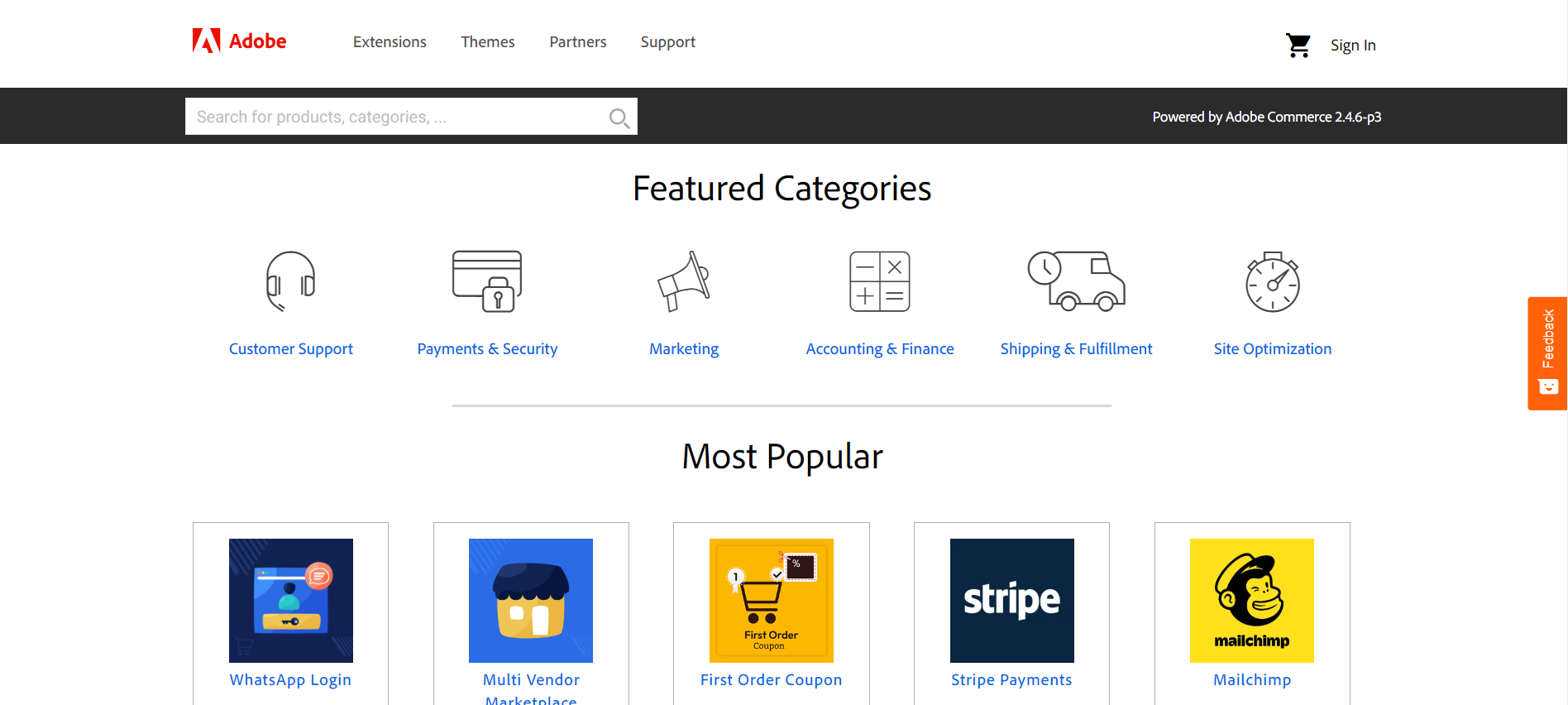

Marketing Features
Design FunctionalitiesRepresents how well each platform allows for creative design and customization of websites.Score Components:
- Template Variety (30%): Range and quality of design templates.
- Customization (30%): Flexibility and options for design alterations.
- User Interface (20%): Ease and intuitiveness of the design process.
- Responsiveness (10%): Adaptability to different devices and screen sizes.
- Innovation (10%): Unique design features and tools.
 8.1
8.1
 7.4
7.4
🏆
Overall Winner: Adobe Commerce(ex Magento)
. Adobe Commerce(ex Magento) offers a more comprehensive set of marketing features, including advanced tools for creating and managing promotions, customer segmentation, and detailed analytics. Unbounce, while strong in creating high-converting landing pages and integrating with other marketing tools, lacks direct email marketing and blogging features.

|

|
|
|---|---|---|
|
SEO Tools |
|
|
|
Email Marketing |
|
|
|
Blogging |
Can be integrated with platforms like WordPress |
|
|
Social Media Integration |
|
|
|
Analytics and Reporting |
Detailed insights into ecommerce activities |
Detailed insights into landing page performance |
|
Ads and Promotions |
Advanced tools for creating and managing promotions |
Landing pages for ad campaigns |
Customer Support
Customer supportEvaluates the quality and availability of support options.Score Components:
- Response time (40%): Speed of support responses.
- Support quality (30%): Effectiveness and helpfulness of the support.
- Availability (20%): Range of support channels (phone, chat, email).
- Resource richness (10%): Quality of self-help and educational materials.
 8.3
8.3
 7.7
7.7
🏆 Winner: Adobe Commerce(ex Magento)
. When comparing Adobe Commerce(ex Magento) vs Unbounce, Adobe Commerce(ex Magento) takes the lead with a customer support score of 8.3. Adobe Commerce offers 24/7 support through phone, email, and live chat, along with a comprehensive knowledge base and community forums. Their enterprise-level support includes dedicated account management and access to a global network of experts, ensuring businesses can maximize their ecommerce operations.
Unbounce, with a customer support score of 7.7, provides a variety of support options, including live chat, email, and phone support available Monday to Friday from 6 AM to 6 PM PST. Additionally, Unbounce offers 24/7 support through their Help Centre, Community, and Chat Bot. Their enterprise-level plan features dedicated customer support with personalized training and optimization sessions, ensuring users have access to expert assistance when needed.
Security
SecurityLooks at the platforms’ security measures and data protection.Score Components:
- Data protection (40%): Safeguards for user and customer data.
- SSL and encryption (30%): Implementation of secure connections.
- Compliance (20%): Adherence to industry security standards.
- Regular updates (10%): Frequency of security updates and patches.
 8.4
8.4
 8.4
8.4
It’s a tie
. Both Adobe Commerce (ex Magento) and Unbounce take security seriously and have robust measures in place to protect user data and ensure website security. Adobe Commerce provides advanced encryption and access control measures, regular security updates and patches, secure payment processing, and tools for monitoring suspicious activity.
Unbounce, on the other hand, maintains high security standards by achieving PCI Level 4 Merchant status and adhering to GDPR, implementing robust disaster recovery strategies, and undergoing regular external security audits. It also employs a secure, multi-tenant environment with strict access controls and daily data backups, and has a robust security framework focusing on the protection of user data and compliance with key regulations.
AI Capabilities
AI capabilitiesMeasures the effectiveness of AI-driven features and tools.Score Components:
- Automation efficiency (40%): Impact of AI on streamlining processes.
- Personalization (30%): AI-driven customization for users or customers.
- AI-Assisted design (20%): Role of AI in website design and functionality.
- Data analysis (10%): Use of AI in interpreting user data and analytics.
 7.7
7.7
 7.5
7.5

|

|
|
|---|---|---|
|
Personalized Design |
|
Unbounce’s Smart Builder offers personalized templates and design recommendations |
|
SEO Optimization |
AI-driven SEO optimization |
AI-assisted content generation |
|
Customer Behavior Analysis |
AI analyzes shopper behavior and trends |
AI directs visitors to the most appropriate landing page variant |
|
Sales Predictions |
AI forecasts inventory needs and optimizes pricing strategies |
|
|
Inventory Management |
AI-driven inventory management |
|
|
Content Generation |
AI automates the generation of unique and compelling product descriptions |
Unbounce’s Smart Copy generates various types of content |
🏆 Winner: Adobe Commerce (ex Magento)
. Adobe Commerce’s AI capabilities are more comprehensive, particularly in the areas of eCommerce and content generation. It uses AI to personalize product recommendations, manage inventory, optimize pricing, and automate content generation.
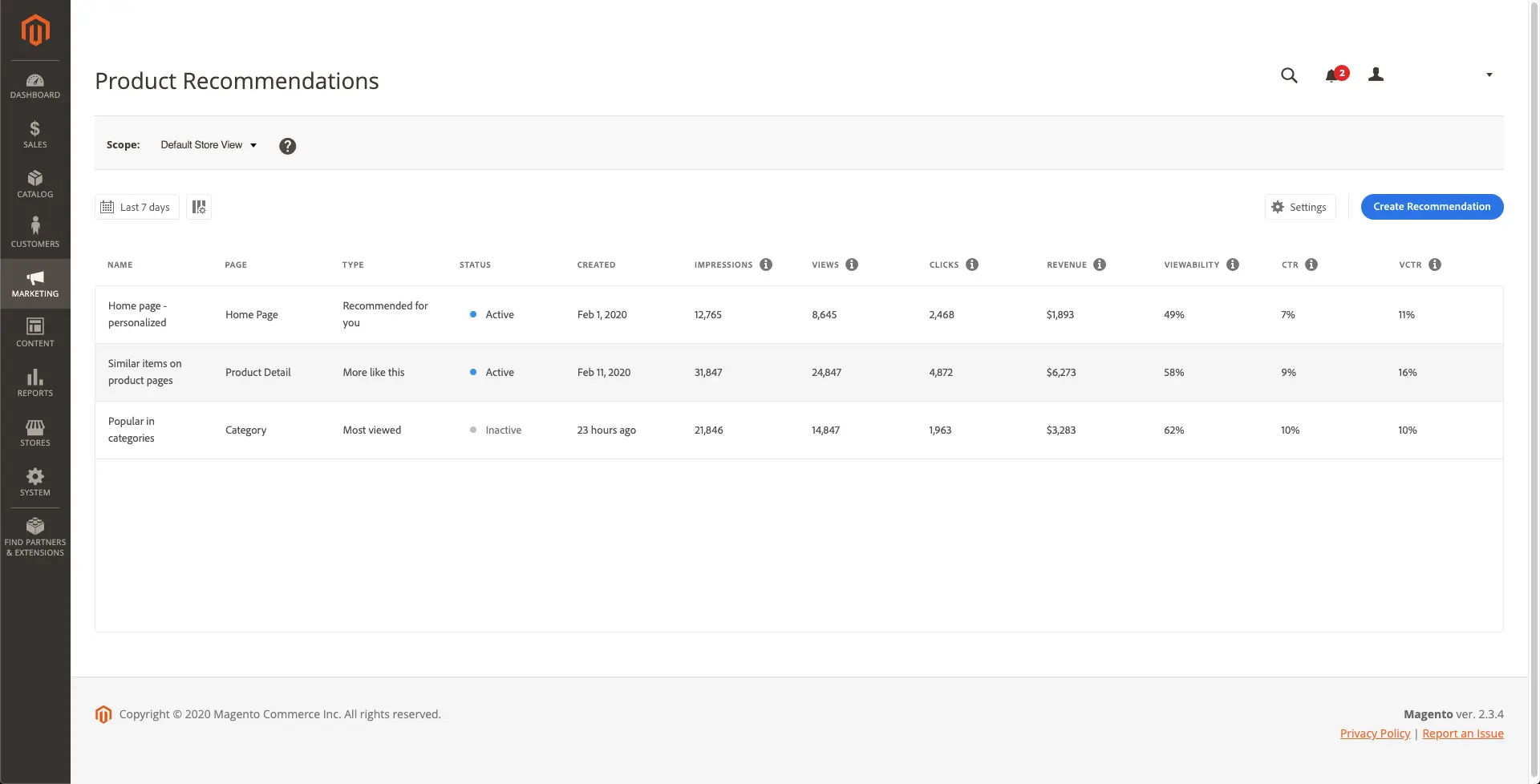
Unbounce, with a score of 7.5, uses AI to optimize landing page creation and content generation. It also uses AI to direct visitors to the most appropriate landing page variant and to offer practical advice and recommendations designed to elevate the effectiveness of landing pages.
User Management
User ManagementAssesses the platforms’ capabilities in managing user roles, permissions, and accessibility.Score Components:
- Role Customization (40%): Flexibility in creating and defining user roles and
permissions. - Ease of Management (30%): User interface and tools for managing users.
- Access Control (20%): Effectiveness of access control measures for different user
levels. - Scalability (10%): Ability to manage a growing number of users efficiently.
 8.0
8.0
 7.2
7.2
🏆 Winner: Adobe Commerce(ex Magento)
. Both Adobe Commerce(ex Magento) and Unbounce offer different approaches to user management.
- Adobe Commerce(ex Magento) allows the number of users based on user licenses and roles. User licenses, bought separately, determine the total number of users allowed, with additional licenses purchasable as needed. Roles and permissions, managed within the available licenses, control access and modifications, ensuring data security and efficient workflow.
- Unbounce offers one staff account on its basic plan, with the option to expand up to 15 accounts on the premium plan. It also provides customizable permissions, enabling you to restrict or grant access based on roles such as viewer, author, and administrator.
Adobe Commerce(ex Magento) User Roles and Access Levels:
| Role | Description | Access Highlights |
|---|---|---|
| Administrator | Has full permissions to all aspects of Adobe Commerce, including global settings and data. | Full access to all settings, data, and functionalities within Adobe Commerce. Can manage other users’ roles and permissions. |
| Store Administrator | Responsible for the day-to-day management of the store, including products, orders, and customer service. | Access to manage products, process orders, and handle customer inquiries, but may have restricted access to sensitive global settings or data. |
| Design Team Member | Focuses on the aesthetic and user experience aspects of the store, working on content design and layout. | Access to content design tools and functionalities, but restricted from accessing customer, order information, and other sensitive areas. |
| Default User (B2B) | Has view-only access to company profile and credit information, and full access to activities related to sales and quotes. | Full access to sales and quotes activities; view-only for company profile and credit information. |
| Senior Buyer (B2B) | Engaged in purchasing, with access to all Sales and Quotes resources, and view-only permissions to the Company Profile, User and Teams, Payment Information, and Company Credit. | Comprehensive access to Sales and Quotes, with limited viewing rights for company’s financial and profile data. |
| Assistant Buyer (B2B) | Assists in purchasing activities, with permissions to place orders using Checkout with Quote, and to view orders, quotes, and company profile information. | Permission to execute orders and access relevant purchasing data; view-only access to company profile information. |
Unbounce User Roles and Access Levels:
| Role | Description | Access Highlights |
|---|---|---|
| Viewers | Members of your team who want to view and approve pages, popups, or sticky bars before publication. | Can access pages, popups, sticky bars, stats, and leads. Cannot edit/manage pages or access account management, billing details, domains, or add users. |
| Authors | Designers or copywriters invited to edit landing pages. | Can edit, manage, publish/unpublish pages, popups, sticky bars. Have access to viewing leads and stats. Cannot access account management, billing details, domains, or add users. |
| Administrators | Manage the Unbounce account, including billing details. | Can edit, manage, publish/unpublish pages, popups, sticky bars. Can access account management, billing details, domains, and add users. Cannot delete leads or remove other Admins. |
Additional Features

|

|
|
|---|---|---|
|
SSL Certificate |
|
|
|
Custom Domain |
|
|
|
Free Custom Domain Included |
|
|
|
International Domains |
|
|
|
Mobile Responsive |
|
|
|
Page Speed |
|
|
|
Website Builder Mobile App |
|
|
|
Convert a Website To An App |
|
|
|
Website Analytics |
|
|
|
Multilingual Sites |
|
|
|
Multiple Users |
|
|
User Feedback
Adobe Commerce (formerly Magento Commerce) receives high praise for its comprehensive ecommerce solutions, offering features like customer and order management, scalability, and customization options. Users appreciate its flexibility and ease of use, although some mention a learning curve due to its extensive features. Despite occasional drawbacks like slow speed or complexity, Adobe Commerce proves beneficial for businesses seeking robust ecommerce platforms, aiding in sales growth, customer management, and overall efficiency in managing online stores.
The reviews for Unbounce reveal a mixed sentiment among users. On the positive side, many appreciate its user-friendly, drag-and-drop page builder, which facilitates the quick creation and editing of landing pages without the need for technical expertise. Users find it beneficial for A/B testing, integrating with CRMs, and swiftly turning around marketing content. However, there are notable concerns, particularly with a case of unexpected switch to an annual plan without consent and refusal to refund, indicating potential issues with customer service and billing practices. Additionally, some users mention technical limitations, such as responsiveness issues and the absence of global elements for content updates across multiple pages, which can hinder efficiency.
The making of this blog
We followed a clear, step-by-step process to write and research this article.
FAQ
What are the main differences between Adobe Commerce (ex Magento) and Unbounce?
Which platform is better for ecommerce?
Can Unbounce be used for ecommerce?
Is Adobe Commerce (ex Magento) suitable for beginners?
How do Adobe Commerce and Unbounce compare in terms of design and templates?
Which platform offers better customer support?
Are there any free plans or trials available for these platforms?
Which platform is more affordable?










